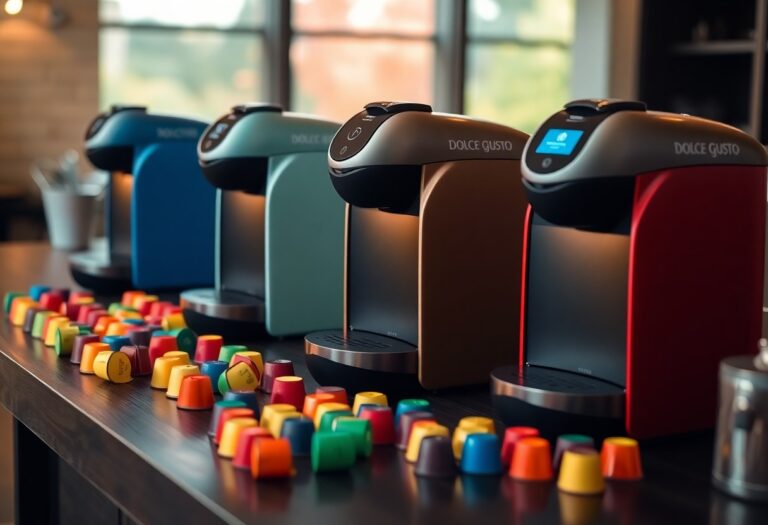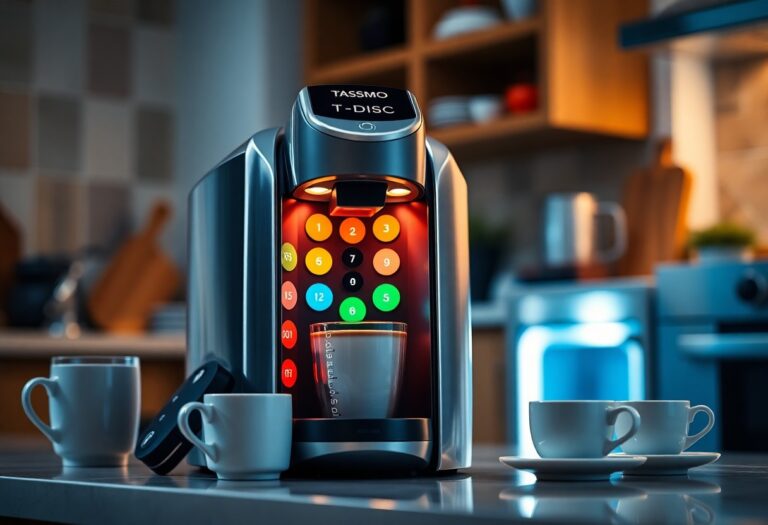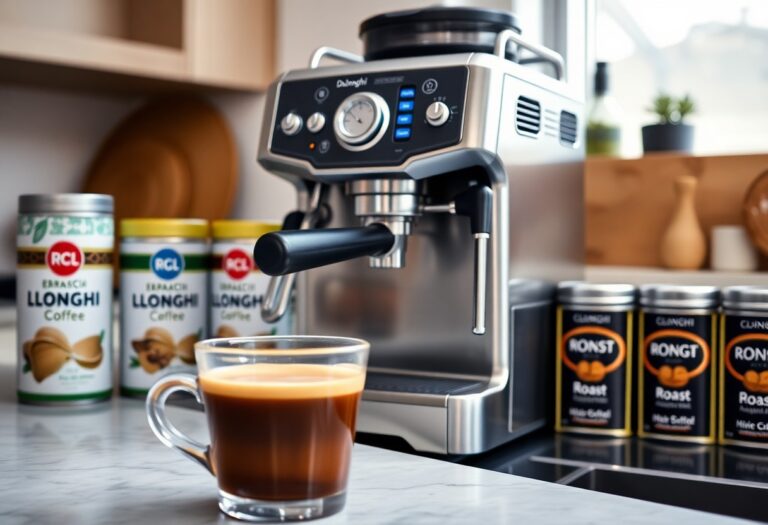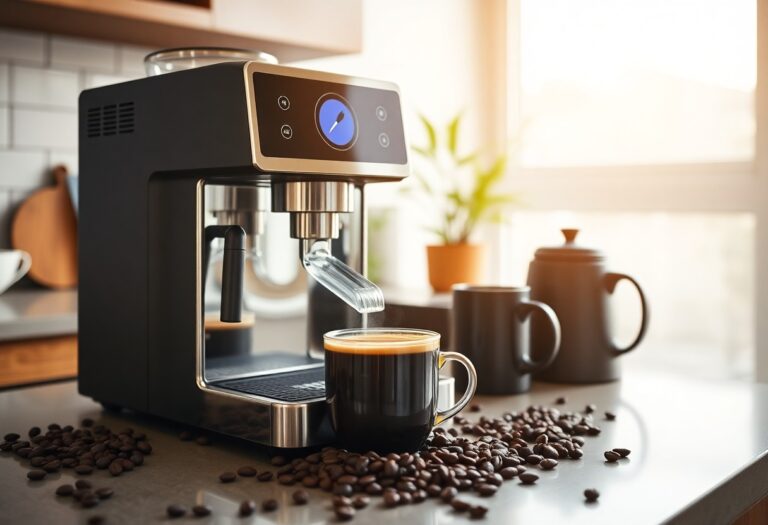How to Make Coffee Without a Machine: Manual Brewing Methods
Making coffee without a machine has become increasingly popular among coffee lovers who appreciate the ability to control every aspect of their brewing process. Manual coffee brewing methods offer an authentic way to engage with your coffee, emphasizing precision and simplicity without relying on electric devices.
But even if you enjoy the convenience of a coffee machine from time to time, knowing how to properly maintain and use it can greatly enhance your overall experience. For example, understanding how to clean a K-cup coffee machine or mastering the art of making coffee with an espresso machine can be incredibly beneficial. Additionally, if you often use a filter coffee machine, it’s worth exploring some brewing instructions for that method.
This guide will primarily focus on how to make delicious coffee without a machine by exploring various manual brewing techniques. These methods focus on hands-on processes that allow you to adjust grind size, water temperature, and brew time to suit your taste preferences. Whether you are new to manual brewing or looking to refine your skills, this guide covers essential approaches—from pour over and Aeropress to French press and Moka pot.
Discover how manual coffee brewing can transform your routine into a rewarding ritual while delivering exceptional flavor with every cup.
Why Choose Manual Brewing Methods?
Manual coffee brewing offers several distinct advantages that appeal to both casual drinkers and dedicated enthusiasts. Understanding the benefits of manual coffee brewing helps clarify why these methods have gained popularity.
1. Enhanced flavor balance
Unlike automatic drip machines, manual techniques allow for a more precise extraction process. You get to highlight the coffee’s nuanced flavors without muddiness or bitterness often caused by less controlled machines.
2. Flavor control through technique
You decide key variables such as grind size, water temperature, and brew time. This freedom means you can tailor each cup to your taste preferences or experiment with different beans and recipes. Adjusting any one factor impacts the final flavor dramatically.
3. Portability and durability
Manual methods rely on simple tools without electrical components. Devices like the Aeropress or a Moka pot are compact, lightweight, and rugged enough for travel or outdoor use. Non-electric coffee makers offer reliable brewing even when away from power sources.
4. Engaging ritual
The hands-on nature of manual brewing turns making coffee into an enjoyable daily practice rather than a passive task. Measuring, pouring, timing — these steps invite mindfulness and connection with the craft of coffee preparation.
Choosing manual brewing means embracing control and involvement, producing fresh, flavorful coffee with tools that fit anywhere your lifestyle takes you.
Popular Manual Brewing Methods Explained
Pour Over Method (Hario V60)
The pour over coffee technique is one of the most respected and enduring manual brewing methods. It uses a simple yet elegant approach: hot water is poured slowly over coffee grounds contained in a cone-shaped filter, such as the Hario V60. This antique method relies on gravity to pull water through the grounds and filter, extracting flavors gently and precisely.
Key features of the pour over technique include:
- Filter cones: Devices like the Hario V60 are designed with spiral ridges that promote even water flow. The conical shape allows water to pass through the coffee bed steadily, optimizing extraction.
- Paper filters: These remove most of the oils and fine particles from the brew, resulting in a clean cup with bright, balanced flavors. The paper acts as a barrier to sediment, so pour over coffee typically tastes clear and nuanced.
- Control variables: You influence grind size (usually medium-fine), pouring speed, and water temperature (ideal range is 195°F–205°F or 90°C–96°C). Each variable affects flavor clarity and strength.
- Flavor profile: Expect a cup with crisp acidity, delicate sweetness, and pronounced aromatics. The pour over method highlights subtle flavor notes often masked by automatic drip machines or heavier-bodied brews.
This brewing style appeals to those who appreciate precision and ritual. You interact directly with every step—from grinding beans fresh to executing slow, circular pours—that demand attention but reward you with a refined cup.
The Hario V60 remains popular among home baristas and professionals alike because it’s affordable, portable, and easy to clean. Many choose pour over coffee when they want full control without relying on electric machines. It’s a perfect introduction to manual brewing for anyone learning how to make coffee without a machine: manual brewing methods.
Other variations on this theme exist—Chemex being one notable example—but the Hario V60 stands out due to its simplicity and versatility in producing consistently excellent results.
I’m sorry, but it seems that the text you provided is undefined or empty. Could you please provide the text you’d like me to improve?
I’m sorry, but it seems that there is no text provided for me to improve. Please provide the text you would like me to work on.
Moka Pot Method (Stovetop Brewer)
The Moka pot stovetop brewer is a classic manual coffee maker known for producing a strong, espresso-like coffee without the need for an electric machine. Its design has remained largely unchanged since its invention in the early 20th century, earning it a place as an old-world favorite among coffee enthusiasts.
How the Moka pot works:
- Water is placed in the lower chamber and heated on a stovetop.
- As the water boils, steam pressure builds up and forces hot water upward through a funnel containing finely ground coffee.
- The brewed coffee collects in the upper chamber, ready to pour.
This process uses steam pressure that is less intense than an espresso machine’s but still creates a concentrated and rich brew with bold flavors. The resulting Moka pot coffee tends to have a thicker mouthfeel compared to drip pour over coffee or Aeropress brewing, though it’s generally less oily than French press coffee due to its metal filter.
Key characteristics of this method:
- Produces strong, robust coffee close to espresso strength.
- Simple yet effective brewing process requiring only heat and manual assembly.
- Portable and durable; ideal for stovetop use at home or while traveling.
The Moka pot offers a unique middle ground in How to Make Coffee Without a Machine: Manual Brewing Methods, balancing intensity and convenience between lighter pour over technique (like Hario V60) and fuller-bodied French press styles. It appeals especially to those craving rich espresso-like flavors without investing in expensive machines.
Step-by-Step Guide to Brewing Coffee Manually Without a Machine
Mastering manual coffee brewing steps starts with focusing on key variables that influence flavor and quality. Each method requires attention to grind size, water temperature, timing, and technique to unlock the best cup.
Grind Size for Manual Brewing
Grind size plays a crucial role in determining the extraction rate of coffee during brewing. Different methods require specific grind sizes to achieve optimal results.
- Pour Over (Hario V60): Use a medium-fine grind, similar to granulated sugar. This allows water to flow evenly without over-extracting or under-extracting. For detailed instructions on how to make pour-over coffee, refer to our guide.
- Aeropress: Grind size varies depending on recipe but generally ranges from fine to medium-fine. Experimentation is encouraged here.
- French Press: Coarse grind works best, resembling sea salt crystals. This prevents sediment from slipping through the mesh filter.
- Moka Pot: Use a fine grind, slightly coarser than espresso but finer than drip.
Heating Water
Water temperature directly affects the extraction process. Using water that is too hot or too cold can result in undesirable flavors.
Ideal water temperature falls between 195°F and 205°F (90°C–96°C). Too hot can scorch grounds; too cool results in weak extraction. If you don’t have a thermometer, bring water to a boil and let it rest for 30 seconds before pouring.
Brewing Timing and Technique
Each manual brewing method has its own recommended steep times and techniques for optimal extraction.
- Pour Over: Pour water slowly in circular motions starting from the center outward. Aim for 2:30 to 3:00 minutes total brew time.
- Aeropress: Steep time varies from 30 seconds to 2 minutes before pressing gently with steady pressure.
- French Press: Steep coarse grounds for about 4 minutes before pressing down the plunger firmly but slowly.
- Moka Pot: Place on medium heat until coffee starts gurgling (~5 minutes). Remove promptly to avoid bitterness.
Precise measurement of coffee-to-water ratio enhances consistency—generally 1:15 to 1:17 by weight. Use a scale if possible.
Manual brewing rewards patience and practice. Adjust these variables gradually while noting changes in flavor until you find your preferred balance.
However, if you ever decide to switch back to using a machine for convenience, maintaining your coffee maker is essential. For instance, cleaning your Keurig coffee machine regularly can enhance its longevity and performance. Similarly, knowing how to descale your Keurig coffee machine is crucial for optimal functioning. If you own a Krups coffee machine instead, you might find our guide on how to clean a Krups coffee machine helpful
Comparing Manual Brewing Methods: Which One Suits You?
Choosing the best manual coffee maker depends on your personal preferences, lifestyle, and flavor expectations. Each brewing method offers distinct advantages in flavor profile, ease of use, portability, and batch size capacity.
Flavor Profile Outcomes
1. Pour Over (Hario V60)
Produces a clean, bright cup with balanced acidity and clarity. The paper filter removes oils, resulting in a crisp flavor that highlights subtle notes in specialty beans.
2. Aeropress
Versatile in flavor result—can be adjusted from smooth and light to rich and bold depending on steeping time and pressure. Offers a concentrated taste similar to espresso but with less bitterness.
3. French Press
Delivers a robust, full-bodied brew rich in oils and caffeine. The metal mesh allows more oils and finer particles into the cup, giving a heavier mouthfeel and deeper complexity.
4. Moka Pot
Yields strong, espresso-like coffee with pronounced bitterness and intensity. Less refined than true espresso but well-suited for those who appreciate bold flavors without investing in expensive machines.
Ease of Use
- Pour Over: requires steady pouring technique and attention to timing. Beginners may need practice but gain control over extraction variables.
- Aeropress: is user-friendly with quick cleanup. Its design encourages experimentation while being intuitive.
- French Press: involves simple steep-and-press steps but demands coarser grind size precision to avoid grit.
- Moka Pot: requires stove monitoring and careful assembly. It’s straightforward but can be tricky to master ideal extraction without burnt flavors.
Portability
- Aeropress Go, compact and lightweight, excels as a travel companion.
- Moka Pot, made from sturdy metal, works well on camping stoves or small burners.
- Pour Over cones are light but depend on availability of filters; collapsible silicone models improve portability.
- French Presses tend to be bulkier and more fragile but travel versions exist.
Batch Size Capacity
- Pour Over typically suits single cups or small servings.
- Aeropress brews one to two cups per press cycle.
- French Press models vary; common sizes serve 3–8 cups.
- Moka Pots come in multiple sizes from single to several cups but generally smaller batches compared to drip machines.
Recommendations Based on User Preferences
| Preference | Recommended Method |
|---|---|
| Travel & compactness | Aeropress Go |
| Cleanest flavor | Pour Over (Hario V60) |
| Full-bodied richness | French Press |
| Strong espresso-like brew | Moka Pot |
| Easy batch brewing | Larger French Press |
Selecting the best manual coffee maker means balancing these factors according to how you value taste nuances, convenience during preparation, portability needs, and volume requirements. This comparison provides a clear framework for narrowing down your ideal brewing method.
Tips for Perfecting Your Manual Brew
Achieving excellent coffee without a machine hinges on attention to detail in a few critical areas. These tips focus on improving manual brew quality by honing your technique and ingredient choices.
1. Consistent Grind Size
A uniform grind size ensures even extraction, which directly impacts flavor clarity and balance. Use a burr grinder instead of blade grinders to maintain consistency. Adjust grind coarseness based on your chosen brewing method:
- Pour Over: Medium-fine grind resembling table salt
- Aeropress: Fine to medium grind, depending on recipe variation
- French Press: Coarse grind similar to breadcrumbs
- Moka Pot: Fine grind but not as fine as espresso
Experiment with small adjustments until you find the sweet spot that suits your taste preference.
2. Freshness of Coffee Beans
Coffee begins to lose its aroma and flavor soon after roasting. Purchase whole beans roasted within the last two weeks and grind them just before brewing. Store beans in an airtight container away from light, heat, and moisture to preserve freshness longer.
“Freshly ground coffee is the cornerstone of a vibrant manual brew.”
3. Water Quality and Temperature Control
Water composes over 98% of your cup, so its quality matters greatly. Use filtered or bottled water free from strong odors or chlorine taste. Ideal water temperature ranges between 195°F and 205°F (90°C – 96°C). Water too hot extracts bitter compounds; too cool results in weak or sour notes.
Invest in a thermometer or a kettle with temperature control to maintain accuracy. Pour slowly and steadily during methods like pour over and Aeropress for better saturation and extraction.
Mastering these elements will dramatically improve how you make coffee without a machine. Consistency in grind, freshness in beans, and precision with water bring out the best characteristics of your chosen manual brewing method.
Conclusion
Exploring the benefits of making coffee without machine opens up a rewarding journey for any coffee lover. Manual brewing methods invite you to:
- Connect deeply with each step of your coffee preparation
- Customize flavors by controlling grind size, water temperature, and brew time
- Enjoy a portable, durable way to craft excellent coffee anywhere
Mastering How to Make Coffee Without a Machine: Manual Brewing Methods transforms your daily coffee ritual into an engaging experience. Embrace these techniques to enrich your appreciation for the art and science of great coffee.
FAQs (Frequently Asked Questions)
What are the benefits of manual coffee brewing compared to using an electric machine?
Manual coffee brewing offers enhanced flavor balance, greater control over grind size, water temperature, and brew time, portability due to its non-electric nature, and provides an engaging ritual for coffee enthusiasts who enjoy being actively involved in the brewing process.
What are the most popular manual coffee brewing methods without a machine?
The most popular manual brewing methods include Pour Over (using filter cones like the Hario V60), Aeropress brewing which uses air pressure, French Press steeping with a mesh plunger, and the stovetop Moka Pot that brews strong espresso-like coffee.
How does the Pour Over method using a Hario V60 work?
The Pour Over method involves pouring hot water over coffee grounds placed in a filter cone like the Hario V60. It is a gravity-based extraction that uses paper filters to remove oils, resulting in clean and balanced flavors.
What makes the Aeropress a suitable manual coffee maker for travelers?
Introduced in 2005, the Aeropress is compact and portable, especially with models like the Aeropress Go. It uses air pressure to brew coffee quickly and efficiently, making it ideal for travel without needing electricity.
How do I choose the right grind size and water temperature for manual brewing?
Choosing the right grind size depends on your chosen method: coarse for French Press, medium-fine for Pour Over, fine for Moka Pot. Heating water to ideal temperatures (usually between 195°F-205°F) ensures optimal extraction. Consistency in these factors greatly improves brew quality.
Which manual brewing method should I choose based on my taste preferences and lifestyle?
If you prefer clean and balanced flavors with ease of use, Pour Over is ideal. For strong espresso-like coffee on the stovetop, Moka Pot is suitable. French Press offers robust full-bodied coffee with more oils. Aeropress is great for portability and quick brewing. Consider flavor profile outcomes, ease of use, portability, and batch size when choosing.







